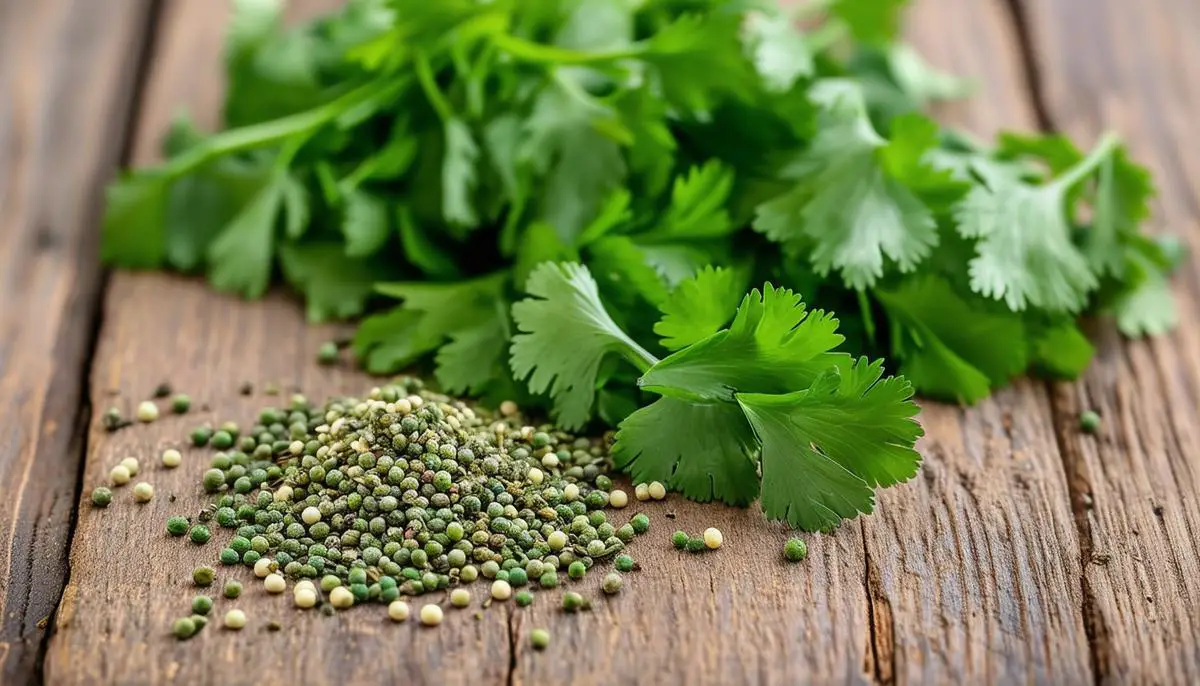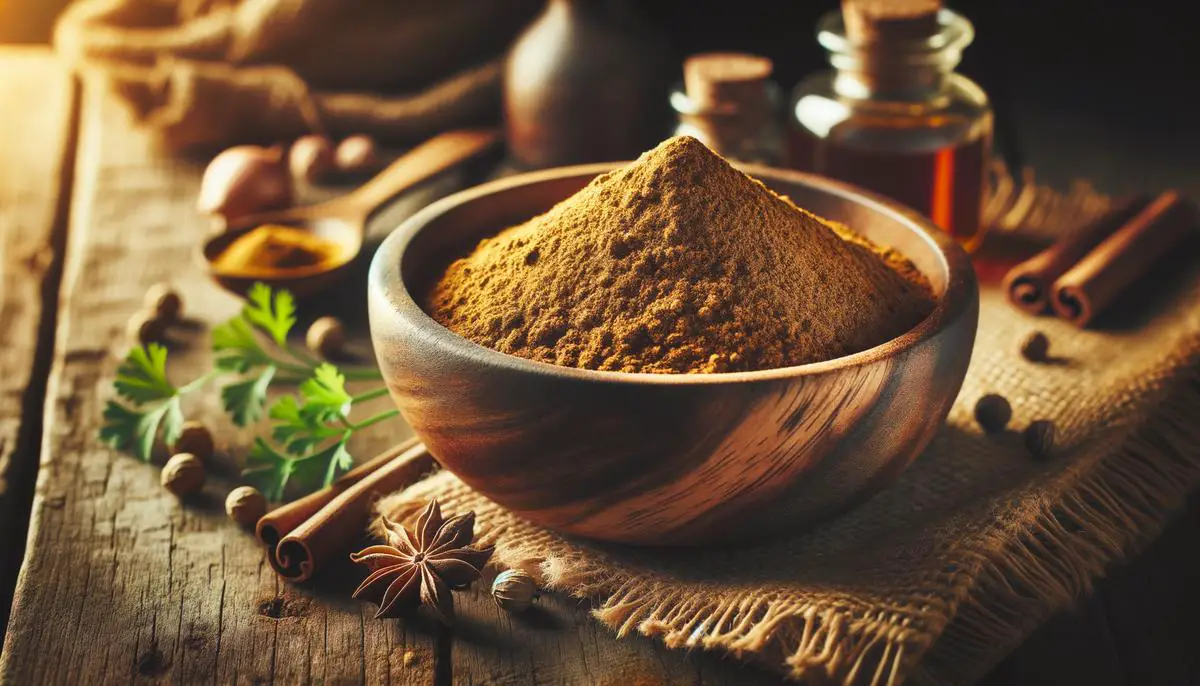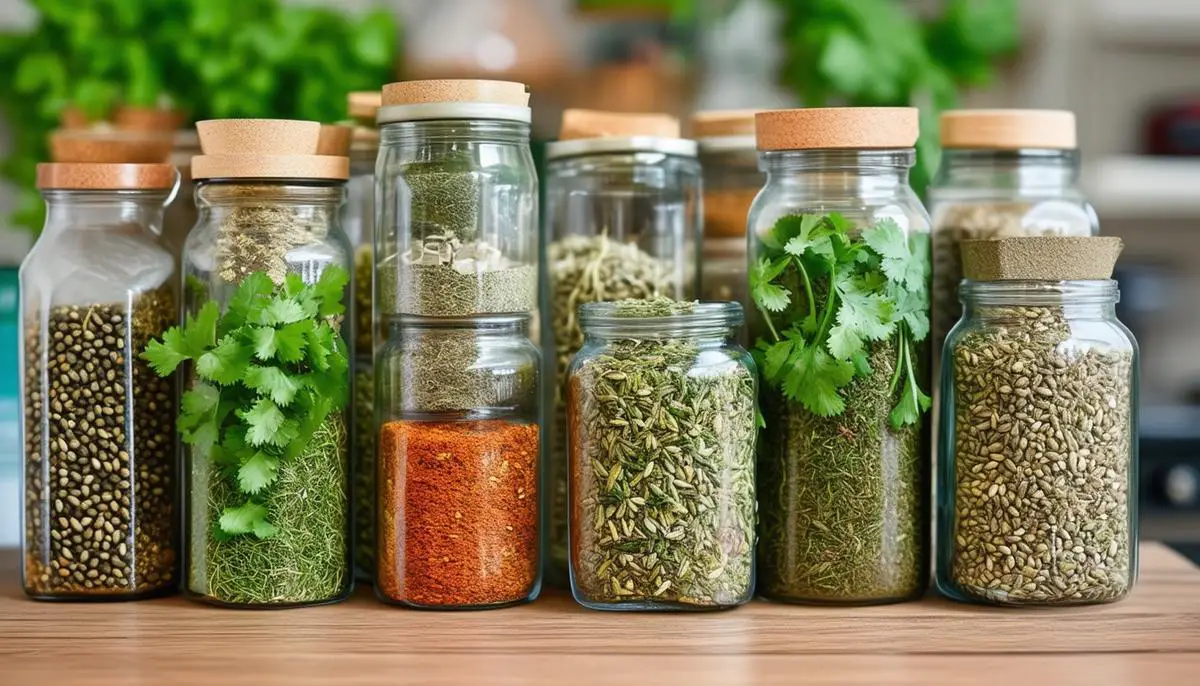
Nutritional Comparison
Dried cilantro and coriander seeds, derived from the same plant, Coriandrum sativum, offer distinct nutritional profiles. Dried cilantro is rich in Vitamin A, essential for eye health, and Vitamin K, crucial for blood clotting. It also provides a modest amount of Vitamin C, supporting the immune system and offering antioxidant benefits.
On the other hand, coriander seeds boast a higher mineral density. They are a substantial source of dietary fiber, aiding digestive health and blood sugar control. These seeds also contain significant amounts of iron, vital for oxygen transport within the body, magnesium, important for muscle function and nerve transmission, and manganese, supporting enzyme function and bone development.
While dried cilantro excels in its vitamin content, coriander seeds stand out for their essential minerals and fiber richness. The antioxidant properties of Vitamin A in cilantro and the diverse mineral profile of coriander seeds make them valuable additions to various dietary frameworks aimed at promoting overall health and well-being.
Culinary Uses
Dried cilantro and coriander seeds play versatile roles in crafting traditional and innovative dishes across global cuisines. Each lends a distinct character to various cooking styles, enhancing flavors in unique ways.
Dried cilantro, with its pleasantly sharp and citrus-like profile, adds life to Mexican salsas and Indian chutneys. Its bright and slightly peppery taste complements the rich flavors of marinades and meat preparations. Chefs often use it sparingly at the end of cooking to retain its delicate flavor nuances without overwhelming the palate.
Coriander seeds, when ground into powder, unfold a warm, earthy tone with a hint of citrus. This aromatic versatility forms the backbone of many spice blends, such as North African ras el hanout and Indian garam masala. Toasting the seeds before grinding releases aromatic oils that deepen their contribution to a recipe's flavor profile.
In Southeast Asian cooking, coriander seeds are incorporated into curry pastes, balancing the fiery chilies and pungent garlic. In European culinary traditions, particularly in Eastern Europe, ground coriander adds an aromatic whisper to baked goods and sausages.
Experimental chefs might use these spices in less traditional ways, such as sprinkling dried cilantro over fresh salads for an unexpected zing or infusing it into oils for uniquely flavored dressings. Coriander seeds can be introduced into botanical-infused cocktails, presenting a subtle yet memorable flavor.
Both dried cilantro and coriander seeds shine in slow-cooked recipes, where their flavors have time to meld harmoniously with the principal ingredients without overpowering them. The skilled layering of these spices exemplifies the art of flavor balance, essential for any culinary enthusiast aiming to elevate the eating experience through thoughtful seasoning.

Processing and Preservation
Preserving the delicate essence and potent flavors of cilantro through drying and the transformation of coriander seeds involves both science and tradition. Freeze-drying is a celebrated technique for preserving the color, shape, aroma, and nutrients of fresh cilantro. This method involves freezing the herb and then reducing the surrounding pressure to allow the frozen water to sublimate directly from ice to vapor, preserving the integrity of the fragile leaves and retaining its nutritional content and sensory attributes.
Processing coriander seeds focuses on enhancing flavor through slow, gentle drying processes. After harvesting, the seeds are cured under controlled temperatures to reduce moisture without sacrificing volatile oils integral to their distinct aroma and taste. Toasting or roasting the dried seeds just before grinding unlocks richer flavors and deeper undertones that raw seeds alone cannot deliver, exciting the essential oils and intensifying their aroma.
Both freeze-dried cilantro and dried coriander seeds are carefully packaged in air-tight and light-resistant containers to shield them from environmental factors that could degrade their quality. This extends their shelf life and maintains the purity of these spices, ensuring maximum impact when used in kitchens worldwide.
The goal of these preservation techniques is not just to prolong shelf life but also to maximize the retention of phytochemical properties and flavor profiles, which ultimately determine the culinary value of dried cilantro and coriander seeds. By appreciating and applying these methods, the culinary world keeps alive age-old traditions and flavors that form the foundation of cuisines across continents, inviting us to explore a vast world of flavor through each herb's transformation.

- Bhat S, Kaushal P, Kaur M, Sharma HK. Coriander (Coriandrum sativum L.): Processing, nutritional and functional aspects. Afr J Plant Sci. 2014;8(1):25-33.
- Sahib NG, Anwar F, Gilani AH, Hamid AA, Saari N, Alkharfy KM. Coriander (Coriandrum sativum L.): A potential source of high-value components for functional foods and nutraceuticals – a review. Phytother Res. 2013;27(10):1439-1456.
- Singletary K. Coriander: Overview of potential health benefits. Nutr Today. 2016;51(3):151-161.



